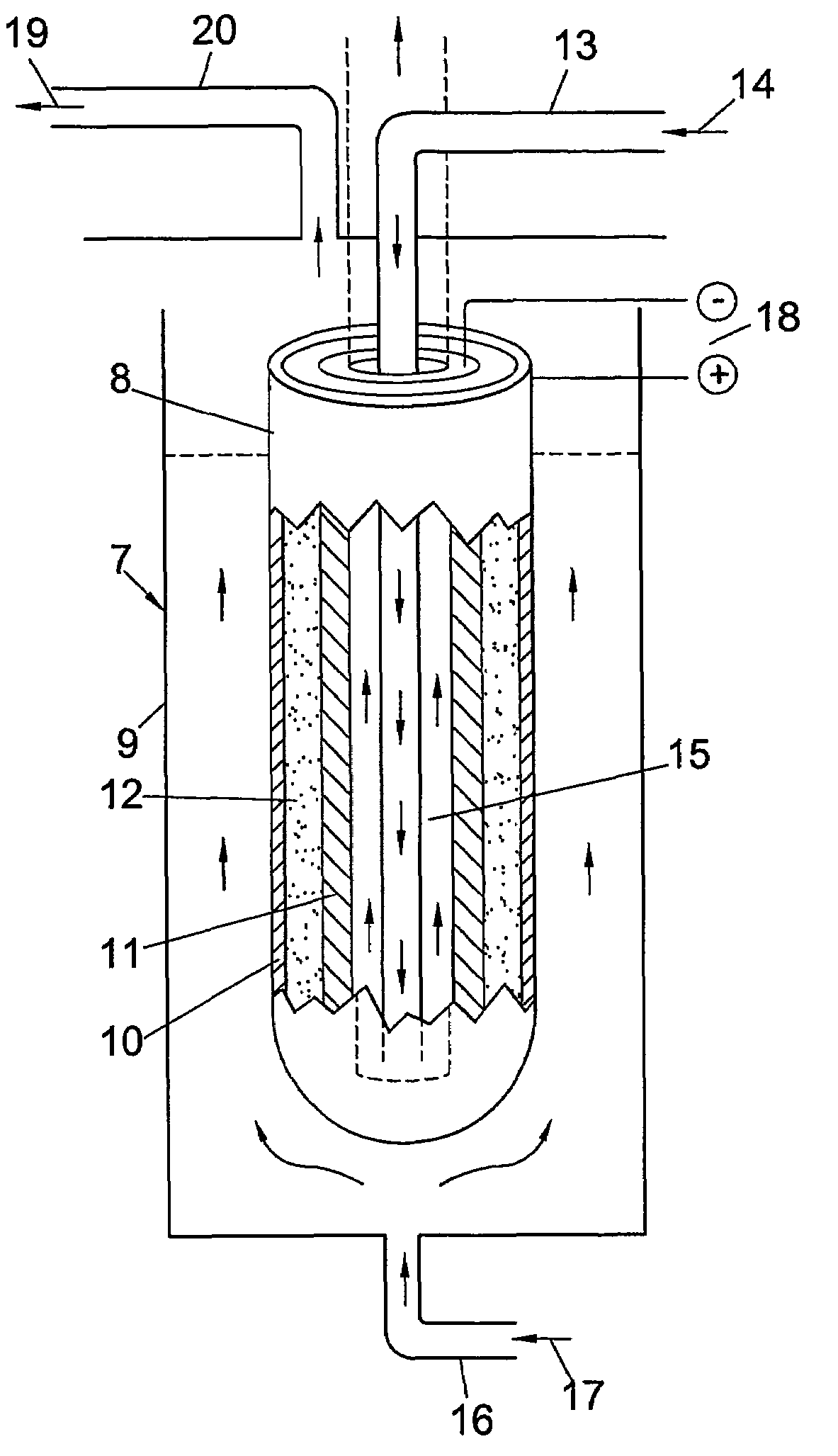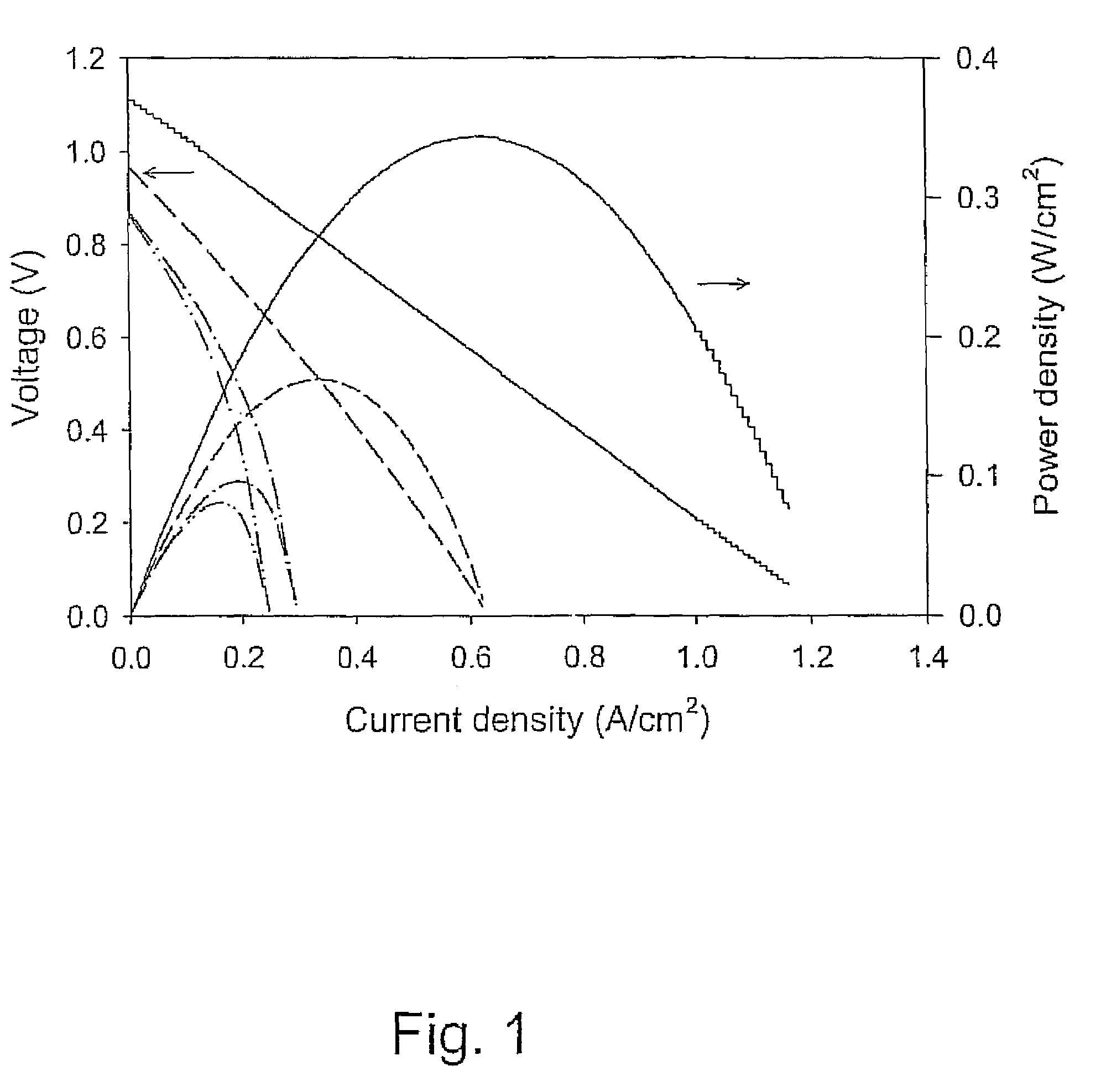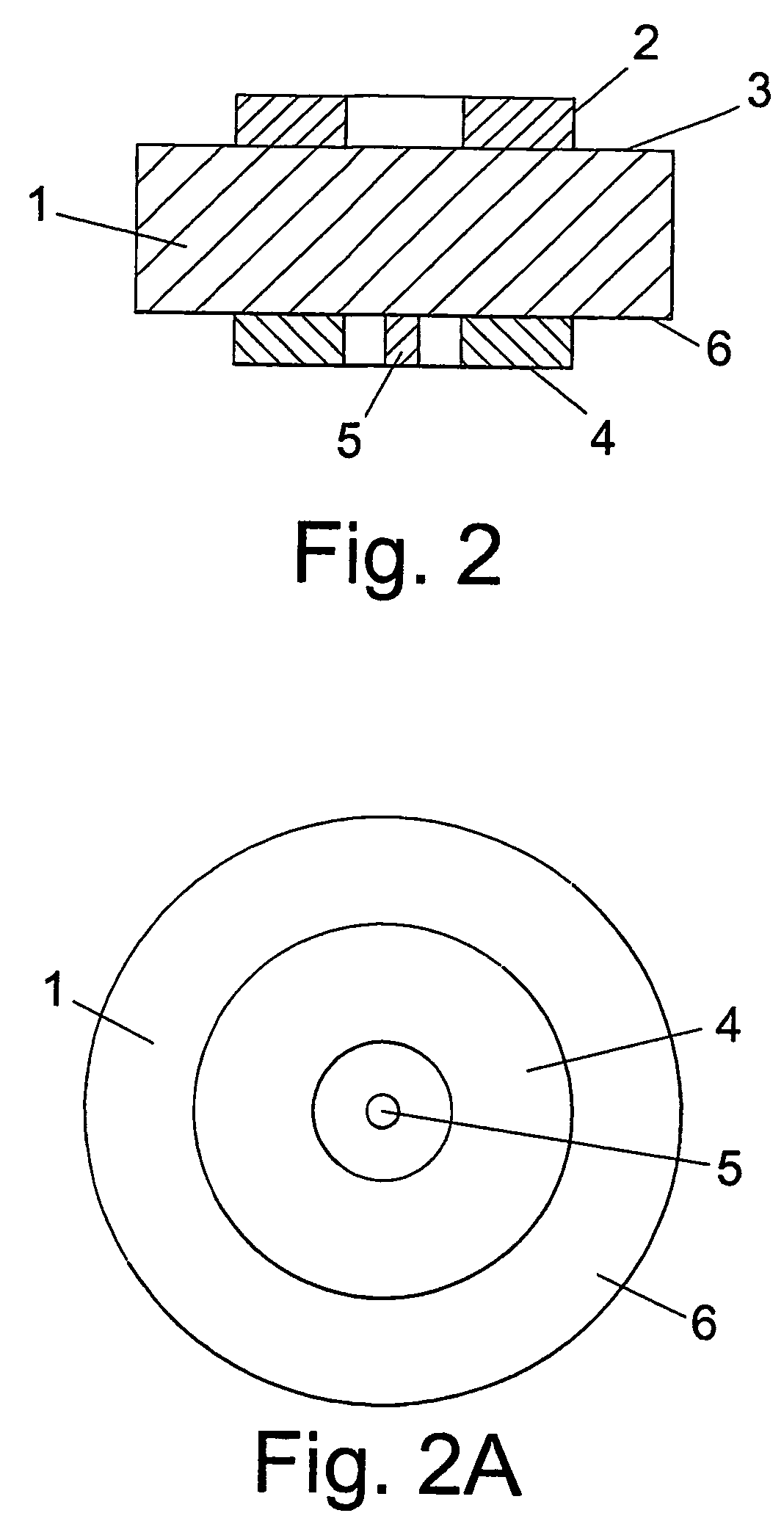Perovskite-based fuel cell electrode and membrane
a fuel cell and perovskite technology, applied in the field of fuel cell electrodes, can solve the problems of reducing the commercialization affecting the economic benefits of the economy, and reducing the practical value of these fuel cells, so as to reduce the energy and capital cost and reduce the effect of nox emissions
- Summary
- Abstract
- Description
- Claims
- Application Information
AI Technical Summary
Benefits of technology
Problems solved by technology
Method used
Image
Examples
example 1
Preparation of Double Perovskite Material
[0040]La2O3 (4.8873 g), SrCO3 (1.4763 g), Cr2O3 (1.5199 g) and MnO2 (1.7388 g) in powder form were mixed together in an agate mortar. The mixed powders were transferred into a zirconia container, with addition some acetone or ethanol and ball-milled for 15 minutes twice, and then left for 10 hours in a fume cupboard to evaporate the organic component.
[0041]The dried powders were then subjected to a series of high temperature firing and intermediate grinding cycles using a muffle furnace, as follows:[0042]1. 12 hours at 1400° C.[0043]2. 20 mins grinding[0044]3. 12 hours at 1400° C.[0045]4. repeat 2&3 once
[0046]The above procedure yielded 9 g of a double perovskite in the form of a powder having the composition La0.75Sr0.25Cr0.5Mn0.5O3 (LSCM). This phase exhibits a rhombohedral unit cell, a=5.4562(3) Å, α=60.440 (9)°.
example 2
Preparation of Double Perovskite Material
[0047]La2O3 (4.8873 g), SrCO3 (1.4763 g) and MnCO3 (2.299 g) were dissolved in dilute nitric acid (40 mls 4 N) and heated to 80° C. with stirring until a solution is obtained. Then 8.0028 g Cr(NO3)3.9H2O was dissolved into the solution. 25 ml pure ethyl glycol was then added into the mixed nitrate solution and stirred at 80° C. for 2 hours. The obtained gel was transferred into a porcelain container and heated on a hot plate until firing into char. The char was further heated at 1100 to 1400° C. to obtain the perovskite oxide having the composition La0.75Sr0.25Cr0.5Mn0.5O3.
example 3
Manufacture of Anode
[0048]The double perovskite material of Example 1 (0.45 g) was mixed with 0.05 g carbon (graphite) and 5 ml ethanol. The mixture was ground in an agate mortar or ball-milled for 30 minutes to form a slurry. The slurry was painted or screen-printed onto an 8 mol % Y2O3 stabilised zirconia (YSZ) 2 cm diameter disc with 2 mm thickness. The anode supported on the YSZ electrolyte was then fired from room temperature heating up at 5° C. / min up to 1100° C., held at 1100° C. for 4 hours, and then cooled down to room temperature at 5° C. / min. The thickness of the anode so obtained is about 30-100 μm with an area of 1 cm2. A small amount of gold paste was partially coated onto the anode (ca. 50% coverage) and fired at 900° C. for 30 minutes using a 5° C. / min heating up and cooling down rate in the range from 300° C. to 900° C., to ensure better electronic contact for testing purposes. Platinum paste (Engelhard Clal 6082) was painted onto the opposite side of the YSZ pellet...
PUM
| Property | Measurement | Unit |
|---|---|---|
| porosity | aaaaa | aaaaa |
| porosity | aaaaa | aaaaa |
| thickness | aaaaa | aaaaa |
Abstract
Description
Claims
Application Information
 Login to View More
Login to View More - R&D
- Intellectual Property
- Life Sciences
- Materials
- Tech Scout
- Unparalleled Data Quality
- Higher Quality Content
- 60% Fewer Hallucinations
Browse by: Latest US Patents, China's latest patents, Technical Efficacy Thesaurus, Application Domain, Technology Topic, Popular Technical Reports.
© 2025 PatSnap. All rights reserved.Legal|Privacy policy|Modern Slavery Act Transparency Statement|Sitemap|About US| Contact US: help@patsnap.com



